This article about top rope climbing is part of the book - Rock Climbing Basics: The Beginner's Guide.

There are two main types of climbing system; top roping and leading. Both of these use the rope and gear to catch a fall, but in different ways. Most beginners start top rope climbing, as it's the safest and easiest way to learn. Once you've mastered the basics you can move on to leading.
Top Roping
- Rope is through the top anchor
- Safer
- Easier to belay
Lead Climbing
- Climber clips the rope into quickdraws as they climb
- Bigger fall potential
- More advanced belaying skills needed
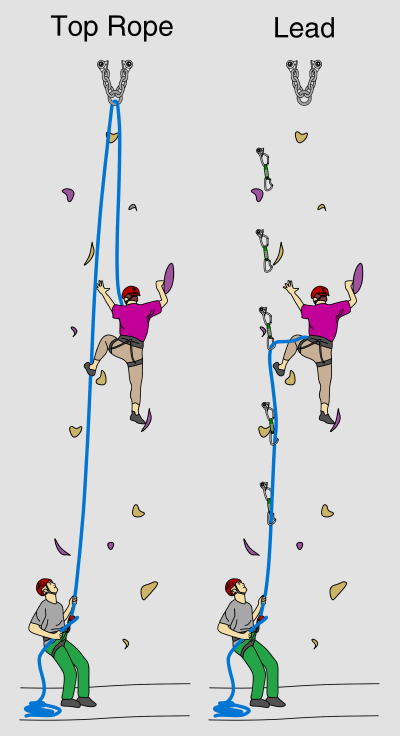
Top Rope Climbing: How It Works
* These steps are discussed in more detail in Rock Climbing Basics.
Step 1
The climber ties into one end of the rope (it doesn't matter which end).
The belayer attaches their belay device near to the other end of the rope.
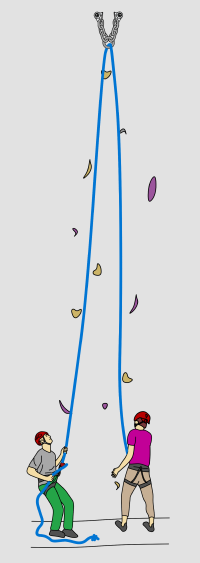
Step 2
As the climber moves up the wall, the belayer takes in the slack (extra rope) through their belay device. This is known as belaying.
It's important to learn this skill well before you trust someone's life to it.
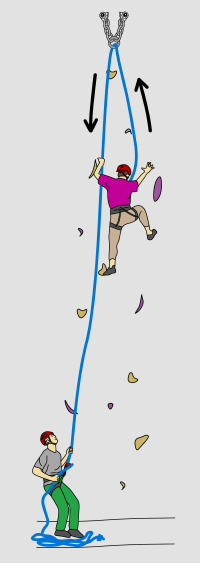
Step 3
If the climber falls, the belayer simply holds them where they are – the friction from the rope running through the belay device makes it easy to hold their weight.
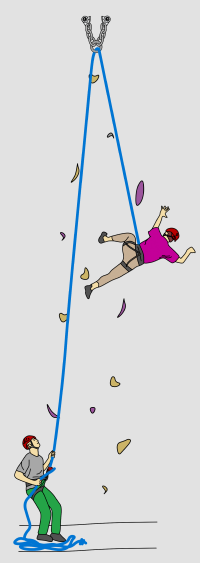
Step 4
Once the climber is at the top (or if they just want to come down at any point), the belayer lowers them back to the ground by letting the rope slide through their belay device under control.
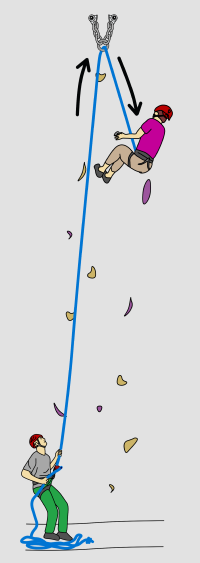
Lead Climbing: How It Works
Step 1
The climber ties in to one end of the rope. The belayer attaches their belay device to the rope next to the climber.
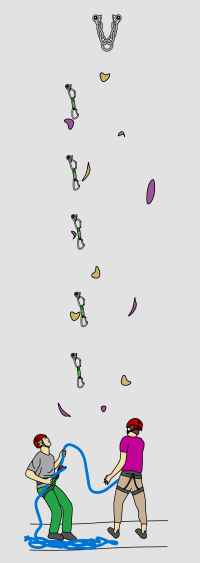
Step 2
The climber clips the rope into quickdraws on their way up the climb.
The belayer switches between feeding rope out and taking it in, depending on whether the climber is below or above a quickdraw.
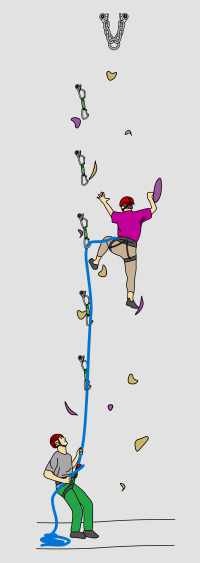
Step 3
If the climber falls, the belayer holds the fall via the rope running through the highest quickdraw.

Step 4
When the climber reaches the top, they clip the rope through the top anchor.
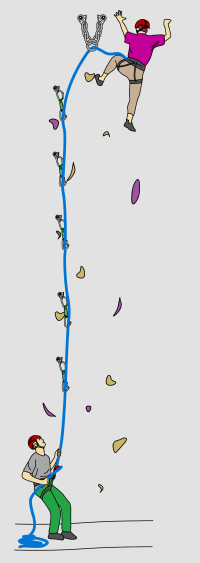
Step 5
The belayer lowers the climber to the ground by letting the rope slide through the belay device under control.
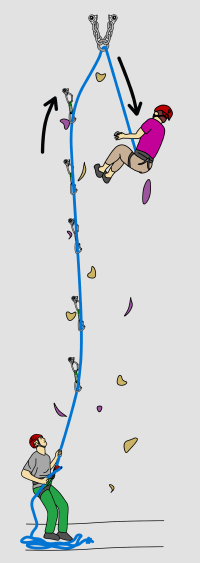
Step 6
The climber unties and the rope is pulled down.
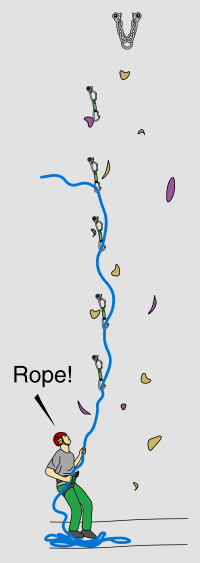






3 thoughts on “The Difference Between Top Rope and Lead Climbing”
Comments are closed.